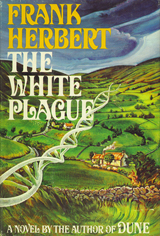
Timothy Thomas Powers is an American science fiction and fantasy author. His first major novel was The Drawing of the Dark (1979), but the novel that earned him wide praise was The Anubis Gates (1983), which won the Philip K. Dick Award, and has since been published in many other languages. His other written work include Dinner at Deviant's Palace (1985), Last Call (1992), Expiration Date (1996), Earthquake Weather (1997), Declare (2000), and Three Days to Never (2006). Powers has won the World Fantasy Award twice for his critically acclaimed novels Last Call and Declare. His 1987 novel On Stranger Tides served as inspiration for the Monkey Island franchise of video games and was optioned for the fourth Pirates of the Caribbean film.

James White was a Northern Irish author of science fiction novellas, short stories and novels. He was born in Belfast and returned there after spending some early years in Canada. After a few years working in the clothing industry, he worked at Short Brothers Ltd., an aircraft company based in Belfast, from 1965 until taking early retirement in 1984 as a result of diabetes. White married Margaret Sarah Martin, another science fiction fan, in 1955 and the couple had three children. He died of a stroke.
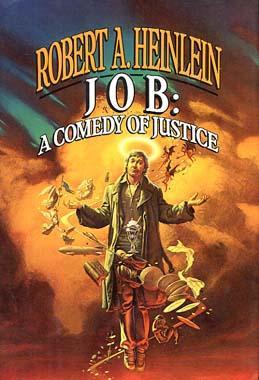
Job: A Comedy of Justice is a novel by Robert A. Heinlein published in 1984. The title is a reference to the biblical Book of Job and James Branch Cabell's book Jurgen, A Comedy of Justice. It won the Locus Award for Best Fantasy Novel in 1985 and was nominated for the Nebula Award for Best Novel in 1984, and the Hugo Award for Best Novel in 1985.
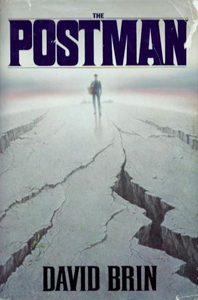
The Postman is a post-apocalyptic dystopia science fiction novel by David Brin. It is about a man wandering the desolate Oregon countryside who finds a United States Postal Service uniform, which he puts on and then claims he is a mail carrier and federal inspector for the "Restored United States of America". His mail service and claims about the return of a central government gives hope to the people, who are threatened by a murderous, neo-feudalist militia.

David Rowland Langford is a British author, editor, and critic, largely active within the science fiction field. He publishes the science fiction fanzine and newsletter Ansible and holds the all-time record for most Hugo Awards, with a total of 29 wins.

Code of the Lifemaker is a 1983 novel by British science fiction author James P. Hogan. NASA's report Advanced Automation for Space Missions was the direct inspiration for this novel detailing first contact between Earth explorers and the Taloids, clanking replicators who have colonized Saturn's moon Titan.
Valentine Pontifex is a novel by Robert Silverberg published in 1983.
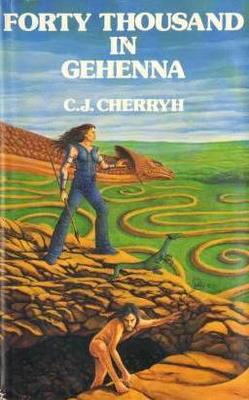
Forty Thousand in Gehenna, alternately 40,000 in Gehenna, is a 1983 science fiction novel by American writer C. J. Cherryh. It is set in her Alliance-Union universe between 2354 and 2658, and is one of the few works in that universe to portray the Union side; other exceptions include Cyteen (1988) and Regenesis (2009).
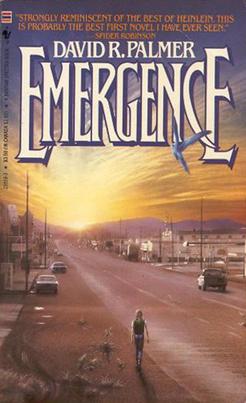
Emergence is a science fiction novel by American writer David R. Palmer. It first appeared as a novella published in Analog Science Fiction in 1981; the same magazine also published Part II, "Seeking", in 1983. The completed novel then was published by Bantam in 1984. The plot follows a precocious 11-year-old orphan girl, living in a post-apocalyptic United States. It had three printings through July 1985, and was republished in 1990 as a "Signature Special Edition" with a few minor edits and a new afterword by the author.
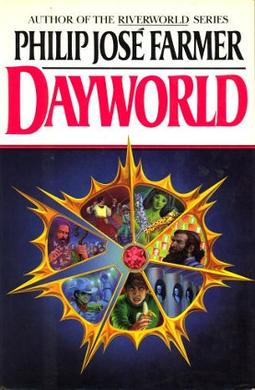
Dayworld is a science fiction novel by American writer Philip José Farmer. Published in 1985, it is the first in the Dayworld tetralogy of novels inspired by Farmer's own 1971 short story "The Sliced-Crosswise Only-On-Tuesday World". There are two sequels - Dayworld Rebel (1987) and Dayworld Breakup (1990) - and one prequel, Dayworld: A Hole in Wednesday, co-authored by Danny Adams (2016).

Ground Zero Man is a science fiction novel by British writer Bob Shaw, first published in 1971, and then revised as The Peace Machine in 1985.
The Void Captain's Tale is a 1983 science fiction novel by the American author Norman Spinrad. The Void Captain's Tale takes place three or four thousand years in the future in an era called the Second Starfaring Age, a setting Spinrad revisited in the 1985 novel Child of Fortune. The book contains elements of confession, love story, eroticism, and horror.
Biological warfare (BW)—also known as bacteriological warfare, or germ warfare—has had a presence in popular culture for over 100 years. Public interest in it became intense during the Cold War, especially the 1960s and '70s, and continues unabated. This article comprises a list of popular culture works referencing BW or bioterrorism, but not those pertaining to natural, or unintentional, epidemics.
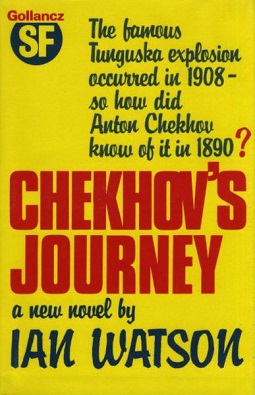
Chekhov's Journey is a novel by Ian Watson published in 1983.
Aurelia is a novel by R. A. Lafferty published in 1982.
Nifft the Lean is a fantasy novel by Michael Shea published in 1982.
When Voiha Wakes is a novel by Joy Chant published in 1983. It is the third book in the House of Kendreth series, following Red Moon and Black Mountain (1970), and The Grey Mane of Morning (1977).
In Viriconium is a novel by M. John Harrison published in 1982. It is the third novel in the Viriconium series.
The Man in the Tree is a novel by Damon Knight published in 1984.
Dramocles: An Intergalactic Soap Opera is a novel by Robert Sheckley published in 1983.
